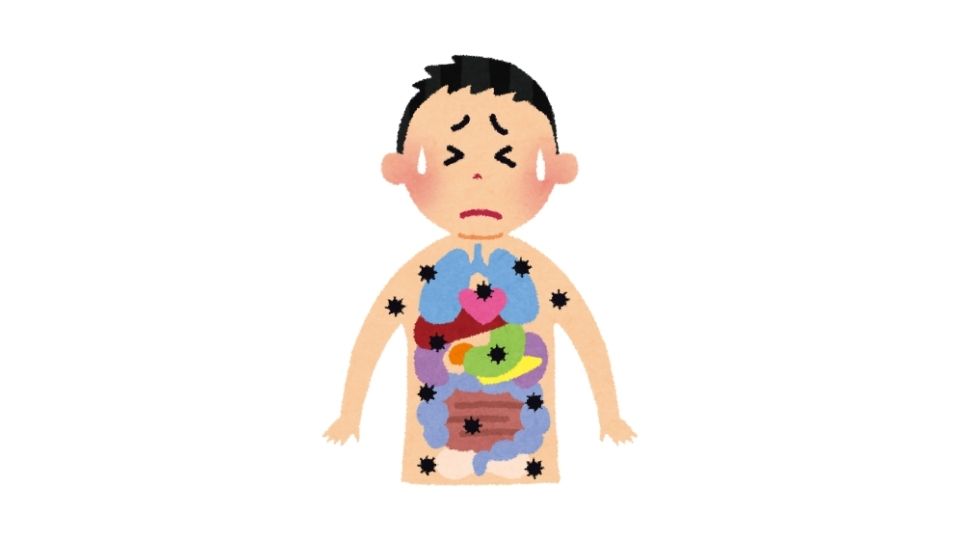Food Poisoning Affects 34 Passengers on Guam–Japan Flights
Food Poisoning Affects 34 Passengers on Guam–Japan Flights

I just ate an airplane meal and now I can’t stop puking!
Food poisoning on flights is a rare but serious risk, as demonstrated by the recent incidents affecting 34 passengers traveling from Guam to Japan.
Two separate flights – United Airlines Flight 873 and Japan Airlines (JAL) Flight 942 – both experienced outbreaks of illness among passengers, with symptoms including vomiting, nausea, stomach pains, and fevers.
The kicker? Some passengers were already feeling sick before they even boarded the plane. That’s a pretty big clue this wasn’t your typical “blame the airline food” situation.
Let’s break down what happened, why it matters, and what you can do to avoid spending your vacation hugging a toilet bowl.
The Tale of Two Sick Flights
What Happened?

Both flights departed Guam’s Antonio B. Won Pat International Airport for Tokyo Narita within minutes of each other – JAL942 at 16:41 and United 873 at 17:12 local time.
On United’s flight, 18 passengers reported food poisoning symptoms, while JAL’s flight had 16 passengers affected. When they landed in Tokyo, medical teams were waiting – some passengers needed hospitalization, while others recovered without further treatment.
Both airlines quickly clarified that the illnesses weren’t linked to their inflight meals. JAL noted that six people actually had symptoms before boarding, and United pointed out that symptom onset varied widely among affected passengers.
The common thread? Many of the sick passengers were students and teachers from the same high school group.
The Mystery Source

Since both airlines operated independently yet experienced nearly identical issues on the same route at almost the same time, investigators suspect the contamination source was somewhere on the ground in Guam rather than anything served in the air.
This theory makes even more sense when you consider:
- Many affected passengers were from the same school group
- Some showed symptoms before boarding
- The flights departed within 30 minutes of each other
The investigation includes collaboration between the airlines, Tokyo health officials, and Guam authorities, but so far no smoking gun has been identified.
Food poisoning outbreaks in transit areas often stem from contaminated local catering, unsanitary food handling, or simply passengers who were already ill before boarding.
Food Safety in the Friendly Skies
Airlines actually take food safety extremely seriously – and for good reason. Japan Airlines learned this lesson the hard way back in 1975 when Staphylococcus bacteria in their inflight meals caused over 190 illnesses. Talk about a PR nightmare!
Today’s airlines invest heavily in:
- Rigorous food safety checks
- Regular deep cleaning procedures
- Training cabin crew to handle medical emergencies
- Coordination with local food providers
- Post-incident investigation protocols
Despite these precautions, outbreaks can still happen due to factors outside the airlines’ immediate control.
Staying Safe While Flying High

Practical Tips for Travelers
This incident is a good reminder that food safety doesn’t start when you board the plane – it begins way before takeoff.
Here are some practical tips for avoiding the airplane bathroom sprint:
- Be picky about pre-flight meals: Airport food courts and nearby restaurants vary wildly in their safety standards
- Pack some safe snacks: Granola bars, nuts, and dried fruits travel well and reduce your need for questionable food options
- Stay hydrated: Dehydration can make food poisoning symptoms worse
- Wash your hands often: Seriously, this one simple habit can prevent so many illnesses
- Watch for warning signs: If food looks or smells off, trust your instincts and skip it
Track What You Eat
One strategy that can help you identify patterns and potential food safety issues is tracking your meals. This is useful not just for travel but for everyday life.
Services like MealByMeal make this super easy – you just text your meals and receive calorie and macronutrient analysis.
Unlike traditional food tracking apps that require endless scrolling and searching, this text-based approach is perfect for travel situations when you don’t have time to fiddle with apps.
By keeping tabs on what you eat, you might notice patterns like “I always feel sick after eating at Airport Terminal B’s food court” or “That particular restaurant gave me trouble last time too.”
The Bigger Picture
Food safety isn’t just a personal concern – it’s a global public health issue. When incidents like the Guam-to-Japan flights occur, they highlight the interconnected nature of our food systems and the importance of maintaining high standards at every step of the food journey.
For frequent travelers, being aware of potential risks and taking reasonable precautions isn’t about paranoia – it’s about smart planning. Just like you wouldn’t travel without insurance, you shouldn’t travel without some basic food safety knowledge.
The Bottom Line

The Guam-to-Japan food poisoning incident serves as a reminder that even with modern safety systems, foodborne illness can still strike.
While investigations continue into the exact source, the coordinated response between airlines and health authorities demonstrates how seriously these incidents are taken.
For the rest of us, it’s a good prompt to think about what we eat before and during travel, and how tools like meal tracking can help us make better choices and identify problems.
So next time you’re heading to the airport, remember: a little caution and awareness can go a long way toward ensuring your only travel memories are good ones. And not, you know, the inside of an airplane bathroom.
After all, the last souvenir you want from your trip is food poisoning!
Want more posts like this?Sign up for our FREE newsletter →
